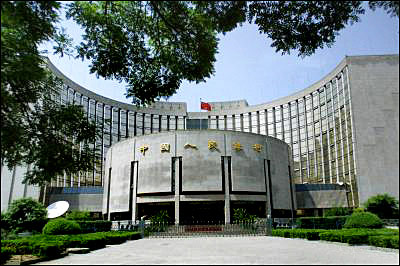For the past few decades, the People's Bank of China exercised the functions and powers of a central bank, as well as handling industrial and commercial credits and savings business; it was neither the central bank in the true sense, nor a commercial entity conforming to the law of the market economy. But since reform and opening-up began in 1979, China has carried out a series of significant reforms in its banking system, and strengthened its opening to the outside world. Consequently, the finance industry has made steady development. At the end of 2005, the balance of domestic and foreign currency savings deposits stood at 30,020.9 billion yuan and the balance of home and foreign currency loans came to 20,683.8 billion yuan. Now China has basically formed a financial system under the regulation, control and supervision of the central bank, with its state banks as the mainstay, featuring the separation of policy-related finance and commercial finance, and the cooperation of various financial institutions with mutually complementary functions.

In 1984, the People's Bank of China ceased handling credit and savings business, and began formally to exercise the central bank's functions and powers by conducting macro-control and supervision over the nation's banking system. In 1994, the Industrial and Commercial Bank of China, the Bank of China, the Agricultural Bank of China and the Construction Bank of China were transformed into state-owned commercial banks; and three policy-related banks -- the Agricultural Development Bank of China, the State Development Bank and the China Import and Export Bank -- were founded. In 1995, the Commercial Bank Law was promulgated, creating the conditions for forming the commercial bank system and organizational structure, and providing a legal basis for changing the specialized state banks to state-owned commercial banks. Since 1996, the financial organizational system has been gradually perfected; the commercial banks wholly owned by the state have been transformed into modern financial enterprises handling currencies; over 120 share-holding medium-sized and small commercial banks have been set up or reorganized; and securities and insurance financial institutions have been further standardized and developed. April 2003 saw the formal establishment of the China Banking Regulatory Commission (CBRC). Since then, a financial regulatory system has been formed in which CBRC, China Securities Regulatory Commission (CSRC) and China Insurance Regulatory Commission (CIRC) work in coordination, each body having its own clearly defined responsibilities.

In 1994, China started the network-based "Gold Card Project," enabling bank cards to be used all over the country. By the end of 2005, the inter-region and inter-bank network had reached over 600 cities, including all prefecture-level cities and more than 300 economically developed county-level cities.
